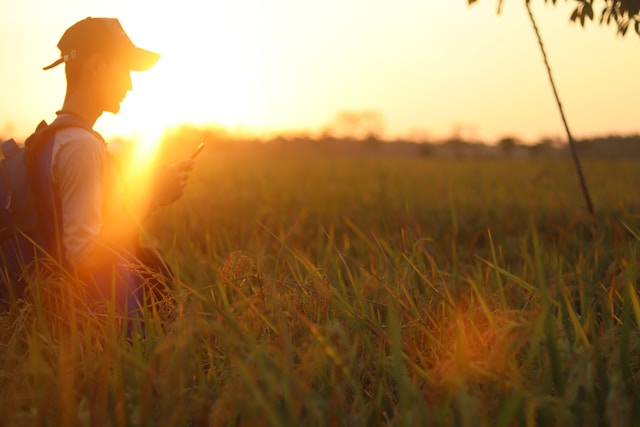Will There Really be Equivalent 4G Network Coverage as Current 3G?

- Summary:
- Mobile network operators are aiming for comparable 4G coverage wherever there is currently 3G coverage before the shutdown.
- Based the Australia 3G shutdown, if you are in a rural area it would be prudent to confirm that your property is covered by your provider’s coverage map before the 3G network shutdown. Some places that had previously received 3G coverage were only receiving what Australian telcos referred to as “fortuitous coverage”, which was not guaranteed after the shutdown.
- 3G has been a useful fallback for communications for customers when there have been planned and unplanned 4G outages.
Numerous mobile networks around the world have delayed the 3G shutdown until they could stand up comparable 4G network coverage. But there are questions about what that will look like in practice at the time of the 3G network shutdown. Below are the websites for the major networks where you can compare their network coverage for 3G versus 4G:
- Spark NZ network coverage map. Spark NZ’s claim: “Our goal is to make sure everyone has the same coverage as they do today – or even better.”
- One NZ network coverage map. One NZ’s claim: “By 31 December 2025, when you’ll be able to access 4G everywhere you currently have a 3G signal (or 5G, where it’s available), we will switch off the 3G network.”
- 2degrees network coverage map. 2degrees’ claim: “There are a small number of areas where only 3G is available today, we are working to expand our 4G coverage in those areas before we shutdown the 3G network.” (The emphasis is from the website.)
The above quotes are from the 3G shutdown information websites. But if you are rural, it may be a good idea to check with your provider to confirm that you will receive equivalent 4G coverage and performance. If you are told that you will get coverage, keep a note. This is because mobile providers sell you mobile services on their available network, so if their available network shrinks, so does your service.
The existence of a fallback network for voice calling can be useful. On May 13, 2022, Spark NZ experienced a VoLTE outage that prevented 20% of calls from going through on their 4G network that morning. Many mobiles reverted to Spark’s 3G network for calls. 111 calling would be unaffected in that instance and would still be unaffected post-3G-shutdown in all places where multiple mobile networks have overlapping 4G coverage. However, the Ampilatwatja community in the Northern Territories completely lost mobile communication when their only mobile provider, Telstra, performed a week-long upgrade on the 4G network post-shutdown. (Though even software upgrades can cause their own issues. On August 28, 2024, a routing error on the Spark network caused by a software upgrade meant that 167 emergency calls were not forwarded to Spark’s 111 operators.)
In 2022, the New Zealand Federated Farmers reported on a survey of rural connectivity. At the time of the survey, there were a significant number of respondents who were using the 3G network. A summary of various connectivity concerns arising from this report are available here.
The number of users connected to a 3G cell site can affect the range of coverage. As more power is needed to handle more users connected to the 3G cell site, the range of coverage of that site contracts. This phenomenon is called “cell breathing“. Given that there is probably a reducing number of users connected to the nearest 3G cell site as people upgrade phones and shift to 4G, it may be the case that your nearest 3G cell site has a larger coverage area than your mobile company originally planned for. This extra coverage has been referred to by Australian telecommunications companies as “fortuitous coverage”. Because of this, if you are on the fringe of the 3G coverage area and currently benefitting from fortuitous coverage, you may not necessarily get the same 4G coverage from your carrier. The Australian National Farmers Federation testified at a public hearing post-3G-shutdown that the impact of reduced connectivity has been significant. So, it is important to check your mobile provider’s coverage map.
In Australia, after the shutdown of the 3G networks in October 2024, there were a number of complaints about reduced or poor 4G coverage in remote and semi-rural areas. In Adelaide Hills, for instance, residents reported patchy reception and slow speeds causing concern about communications in the event of bushfires. The response from network providers in some cases was that the 4G network was suffering from “congestion”, while people experiencing 4G mobile blackspots were sometimes dismissed by mobile companies as losing “fortuitous coverage” of 3G, where the mobile network was unaware that there had been 3G coverage.
If you are concerned about potential loss of coverage, it may be prudent to contact your mobile provider to get some assurance from them before the 3G networks are shut down. If the mobile network provider fails to deliver on their promise, you might lay a complaint with your provider, and if that is not satisfactorily resolved, you may then consider contacting the Telecommunications Dispute Resolution service. Another option may be the Commerce Commission who can investigate claims under the Fair Trading Act 1986. (I have listed a number of individuals and agencies responsible for consumer protections under the Telecommunications Act 2001 on this page.)
(The Commerce Commission has also created an interactive Telecommunications Connectivity Map.)
Page Last Updated February 6, 2025.